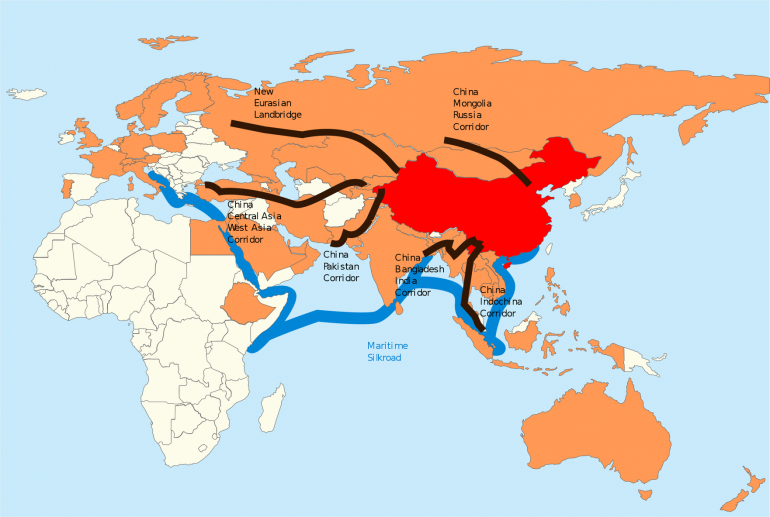Tue 23 August 2016
By Chenxi Wang
Nicholas’ presentation introduced the history and the current status of China’s Silk Road initiative. Based on this introduction, Nicolas proposed more research to be done in the future for the smooth operation of the Silk Road.
Silk Road in Ancient Times
The Silk Road started from the Han Dynasty (206 BCE – 22 CE) when China set up the trade link with the Roman Empire. At that time, China traded its goods such as silk, fine dishware, ornaments with Romans’ products including horses, jade, furs, gold, and so on. Apart from trade, China and other countries along the Silk Road trade route also conducted cultural exchanges through learning from each other. In general, the ancient Silk Road not only facilitated trade between China and Eurasia but also played a crucial role in promoting the great civilizations of China, Mesopotamia, Persia, India, and Rome.
Revival of the Silk Road in the Contemporary Era
In the contemporary era marked by the expanding economic integration, China put forward the initiative of ‘One Belt, One Road’ to revive its ancient trade tradition of the Silk Road and recall China’s historical role in trade promotion between Asia and Europe. The new Chinese initiative of ‘One Belt, One Road’ is part of China’s ‘Go Out’ strategy and shaped by a series of government documents. For instance, the initiative is prescribed in the 2014 Chinese Government ‘Work Report’ and the 2015 National Development and Reform Commission Silk Road Strategy Paper. The ‘One Belt, One Road’ initiative also receives a strong financial backing from the Chinese government. Examples are China’s Silk Road Infrastructure Fund and China’s capital contribution made through the Asian Infrastructure Investment Bank.
Progress of the Silk Road So Far
The new Silk Road initiative has exerted influence on Eurasian economic cooperation and witnessed a proliferation of emerging International Agreements: the expanded 1+4 Shanghai Cooperation Organization (SCO) in 2016, the advancement in the negotiation on the 16+1 Agreement with Central and Eastern European Countries (CEE), and so on.
Besides progress in rules, progresses in practice have also been achieved along the dual land and maritime trade routes of the Silk Road. Several corridors, such as China – Mongolia – Russia Corridor, China – Central Asia – West Asia Corridor, have been built up or are under development along the land route named ‘Silk Road Economic Belt’. The construction of Ports and Canals exampled by the Piraeus Port and the Strait of Malacca and the Suez Canal is also progressing along the maritime route named ‘Maritime Silk Road’.
Challenges Faced by the Silk Road
China’s ‘One Belt, One Road’ initiative has received mixed responses from Eastern European Countries such as Poland and faces scepticism from countries like Kazakhstan which lack trust of the Chinese government. In addition to political hostility, legal challenges also appear due to gaps existing in the legal and regulatory framework of different countries involved in the Silk Road. For example, UNCTAD summarized: “The Central Asian countries have made progress with numerous legal reforms ….such as new commercial legislation …. but the implementation and enforcement of the legal and regulatory frameworks and the governing institutions upholding them have not always kept pace”.
Future Research Question: Achieving Harmonious Trade and Investment
Based on his current research achievements in two books ‘China in the International Economic Order’ and ‘Capital Failure’, Nicholas put forward the future research question concerning how to achieve harmonious trade and investment under the ‘One Belt, One Road’ initiative. Careful research is needed to identify how to harmonize different legal systems along the Silk Road such as Common Law (UK), Civil Law (Europe), and Religious Law (China – Taoist and Confucian). A clear understanding of local traditions and needs of countries involved in the ‘One Belt, One Road’ initiative is also warranted for the sustainable development of the Silk Road.
